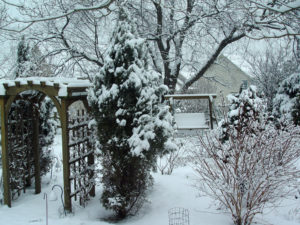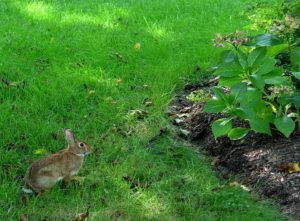The Landscape in Winter
November 13th, 2018
Back when winter-long snow-covers were the norm, plants and their leafless skeletons were little more than different forms of white sticking out above the snowy sea.
But now that winter typically gives us at least periodic spells of bare ground, the winter landscape is no longer a three-month write-off. Cold weather no longer means your yard is doomed to be barren.
Free of white frosting, a surprising number of plants look pretty decent in winter. However, unless you get lucky, it takes planning to have a landscape that makes the most of our fourth and forgotton season.
Needled evergreen trees and shrubs are the most obvious example. Relegated to background and screening status during the growing season, evergreens take on starring roles when the flowers die back.
We have much more to pick from than just green evergreens, though. Choices also come in shades of blue and gold, not to mention a wide range of shapes, textures and growing habits.
Blue junipers, blue spruce, concolor fir and blue cedars are needled evergreens at their best after a snow – or spotlighted at night by landscape lights.
Golden- and yellow-needled Hinoki cypress, goldthread cypress, and junipers are superb for adding bright color during those snow-free periods when the predominant color is lifeless brown.
Toss in broadleaf evergreens such as azaleas, rhododendrons, boxwoods, nandina, and cherry laurel, and you’ve got plenty to give structure and life to the winter landscape.
Hollies, for instance, have attractive bluish-green leaves all winter, and the females give the bonus of red berry clusters that persist most of winter.
Nandina is a broadleaf evergreen whose leaves turn red from late fall through much of winter.
Many types of euonymus have white and green variegated leaves, giving a wintery feel (at least when scale insects haven’t caused the leaves to drop).
And some types of camellias now sold at local garden centers are hardy enough to survive Harrisburg-area winters, giving us the possibility of rose-like flowers even before spring arrives.












